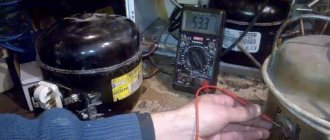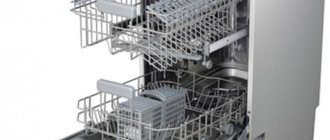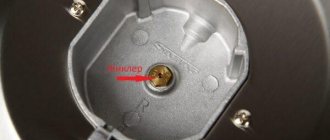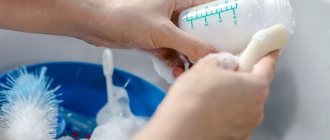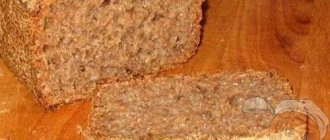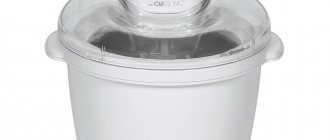Over time, dirt appears in any oven. This always looks unsightly, since a layer of fat can be visible on the door. In addition to being unsightly, a very dirty oven stops functioning normally, which negatively affects the quality of the food. An unpleasant odor or, in general, breakdown may occur. The article contains on-demand tips on how to clean the oven from grease and carbon deposits at home, as well as information about the most popular brands of special cleaning agents.
Types of ovens
Before learning how to clean an oven, every owner must determine its type. It is necessary to take into account the characteristics of the material so that its quality and properties are not affected. Depending on the energy source, there are electric and gas devices. The surface of the oven itself can be bioceramic or made of one of the types of enamel:
- catalytic;
- easy to clean;
- simple.
Many housewives are interested in how to clean grease from a stainless steel oven. Since the material is easily scratched, cleaning agents with large abrasive particles should not be used. Before applying the gel or solution, remove the utensils (baking trays, wire rack, etc.) from the oven and close the fan. After some time, according to the instructions, everything is washed off with water. Contaminants are also removed from the stove.
Ovens with easy-to-clean enamel are designed to make caring for kitchen equipment easier. It is possible to use both special products from the store and self-made solutions, pastes, etc. The material allows you to effortlessly remove greasy layers, carbon deposits and other contaminants.
How to get rid of odor after cleaning
If, after using special products, the chemical smell does not go away from the oven, rinse the walls again with clean water, and then get rid of the unpleasant odor in one of the following ways:
- Heat a glass container with 0.5 liters of water and 2 teaspoons of vanilla extract for 30 minutes at 150℃;
- wipe the inner walls of the oven with table vinegar or vodka;
- Boil a vessel with 3 tablets of activated carbon dissolved in 0.5 liters of water in the oven for 15 minutes.
Why clean the oven?
In conditions where the device is constantly in use, a layer of old fat will certainly appear on the inner shell. With each cooking, it heats up and begins to burn, which will certainly cause a specific aroma. In addition, grease and burns on the walls prevent normal heating, and the oven begins to consume more energy.
By cleaning the oven from grease, the housewife will ensure the quality of the dishes and prevent a situation where they acquire a foreign smell. It often happens that food absorbs aromas remaining inside from previous cooking. Every housewife should know how to clean the oven. This will extend the life of your kitchen appliances and allow you to get quality food. In order to clean or wash the product, it is enough to devote 5 minutes of time. Below are rules on how to care for and what oven cleaners to use.
Additional recommendations
- Apply folk remedies and household chemicals to the cooled surface of the oven.
- Use rubber gloves and personal protection (masks, goggles, clothing) when working with aggressive mixtures.
- For minor stains, try to clean the oven without chemicals; give preference to gentle and health-friendly traditional cleaning methods.
- Clean with open windows or in a ventilated area.
- Use only special products recommended for ovens. Carefully read the precautions and contraindications for their use.
What not to use
- Do not use household chemicals that have expired, so as not to harm your own health and the oven coating.
- Do not scrape off fat and carbon deposits with metal scrapers or brushes, so as not to scratch the inner surface.
- For the same reason, do not use substances with abrasive particles, industrial alkalis and acids.
How to properly care for your oven (prevention of contamination)
To ensure that the oven lasts a long time, follow the basic care recommendations:
- take care of your new oven from the first time you buy it;
- after each cooking, treat the inner surface of fresh fat with dishwashing detergent;
- If used regularly, carry out general cleaning of the oven using traditional methods at least once a month.
To avoid the accumulation of old gunk and the use of harmful household chemicals, regularly apply these simple care rules.
Proper and timely cleaning is the key to a long service life of an electric oven and protecting it from overheating and breakdown. To prevent less fat and soot from accumulating on its walls and to prevent dishes from burning, cover them with a lid, foil or parchment.
Cleaning Rules
To effectively remove dirt, you must adhere to the following rules:
- It is best to wash an electric stove, gas stove or oven with minor dirt using traditional methods;
- choose specifically the cleaning agent that is best suited for a particular type of oven;
- it is necessary to ventilate the room well during the process;
- When working with aggressive substances, it is important to protect the skin of your hands with gloves;
- Children or animals must not be in the room while cleaning;
- When working without gloves, you must remove jewelry.
Our service center offers its services for repairing household appliances at a competitive price. We repair any breakdowns of modern household appliances. Leave a request and get a 15% discount - Leave a request
Separately, it is worth mentioning aggressive products, whose manufacturers claim how quickly and easily they clean the oven from carbon deposits, grease and other contaminants. It is better to work with such substances in a respirator or mask. If they come into contact with your skin, you must wash it with soap and water.
Security measures
The cleansing effect of any drug is based on the interaction of its components and contaminants. The chemical reaction is often accompanied by the release of a sharp, unpleasant odor.
Before you start cleaning, take care of your safety and the health of other people living in the house.
Outsiders
Try to ensure that there are no children in the room at the time of the procedure . Babies tend to show curiosity, pick them up with their hands, taste the contents of various bottles, and inhaling chemical “aromas” is very unsafe for a child’s health.
When starting to wash, engage the children in an activity that interests them and take them to another room or take them for a walk.
ATTENTION! Animals are no less curious than babies, so take your pets to another room.
Ventilation
Before starting work, open the window wide . If you start cleaning the oven during the cold season, leave at least the window open.
Such measures will protect you from the negative influence of the strong smell of preparations during the washing process and will allow you to quickly remove any remaining particles of products in the air after finishing work.
Have you ever cleaned your oven?
Of course not, never
Personal protection
When cleaning the oven walls, wear rubber gloves . Even if you use available products (lemon, soda, vinegar), the acids or alkalis they contain can lead to dry, flaky skin on your hands.
How often to clean
Everything is individual and it is better to give preference to the method based on how often the equipment is used. Traditional oven cleaning requires cleaning every 4 weeks. If you clean the oven after each cooking, then a layer of dirt will form more slowly. It's no secret that old fat and carbon deposits are much more difficult to get rid of.
To clean an electric oven or gas stove, a soap solution is enough.
Activated carbon will help remove chemical smell after cleaning. You need to crush one or two dozen tablets and place them inside the oven for a couple of hours.
How to clean a baking sheet from the oven
Cleaning the baking sheet will not be difficult for you. In most cases, it is enough to simply soak it in a hot soapy solution and remove any remaining dirt with a sponge. Another way is to wash the baking sheet in the dishwasher if it fits in it.
If the baking sheet is old and the dirt cannot be washed off, the heating method will come to the rescue: fill the baking sheet with soapy water, put it in the oven at 120-150 degrees for 10-15 minutes. Once the pan has boiled, it will be easy to clean. For complex stains, additionally use special compositions for cleaning ovens.
Cleaning products
Cleaning the oven involves the use of special solutions and pastes made from natural products that can easily be bought or found at home. It is easier to remove burnt fat with special substances than to wash with plain soapy water. Chemistry helps clean a gas or electric oven with heavy dirt and old grease. Each method has its pros and cons for others and the cleaning process itself.
How to clean an oven using “grandmother’s methods”
The advantage of traditional methods is the use of safe ingredients. Cleaning the oven with household chemicals can cause allergies, irritation and other unpleasant consequences.
Housewives often type the phrase into the search: how to clean the oven with soda and vinegar? To do this, place a container with the solution in a gas oven and turn on the heat for half an hour. Using this method, it is possible to clean all surfaces, including baking sheets and wire racks. To prepare the solution you will need 1 kg of salt, a tablespoon of vinegar and 500 ml of water. All ingredients are mixed and sent to the oven. After 30 minutes, you need to wait until the surfaces have completely cooled and remove everything with a sponge.
One of the most popular methods for cleaning cabinets is using baking soda, vinegar and citric acid. To do this, you need to mix one package of powder, half a glass of vinegar and a tablespoon of soda. All surfaces except heating parts are treated with freshly prepared product and left for 20 minutes. For the best effect, it is recommended to preheat the cabinet to 110 °C. After time, everything is washed with water and well ventilated.
Many people believe that with the help of ammonia the product is cleaned much more effectively. There are two options for removing contaminants. You can simply spread the liquid over the surface and leave overnight. In the morning, the cabinet is washed with soap and water. Ammonia is good at corroding old layers of fat and soot. Therefore, sometimes it is easier to remove dirt this way than to clean it with other means.
To clean the oven with ammonia, there is a hot method. A glass with ammonia on top is placed inside the cabinet, and a container of hot water is placed below. The oven should be preheated to 60° and run in this mode for about 8 hours. Afterwards, detergent is added to the ammonia and the device is washed. During the process, the windows of the rooms should be open, and the presence of residents in the room should be kept to a minimum.
A mixture of soda and vinegar shows good results. Acetic acid is applied to the walls, and then soda. The interaction of these components causes the formation of hydrogen, which destroys fat. Then everything is removed with a simple kitchen sponge soaked in water.
If you don’t have some ingredients at home, you can replace citric acid with lemon juice, and use sea salt instead of table salt.
In addition to vinegar and soda, other ingredients are used to clean the oven using traditional methods. Using laundry soap is considered the safest method. To do this, half the bar is crushed and dissolved in hot water. The container with the prepared solution is placed in an oven heated to 180°. In this mode, the equipment should work for 40 minutes. After cooling, the surfaces are cleaned of softened fat with water. Be sure to ventilate the room well.
An abrasive sponge is also widely used by housewives. It is suitable for all surfaces except glass doors. Unlike, for example, a mixture of soda, vinegar and citric acid, a washcloth removes dirt as a result of mechanical interaction.
If old-fashioned methods such as salt cannot remove the deposit immediately, repeat the procedure.
Regular table salt can also help with care. To do this, place it on a baking sheet and turn on the oven. Operate the oven until the salt turns golden brown. Carbonic acid salts soften fat well. It must be stirred during the process. If you have rock salt at home, you need to crush it. After the surface has cooled, it must be washed with detergent and rinsed with water.
Baking powder helps clean the frying pan. It rolls up particles of fat, after which they are removed with a sponge without much effort. Baking powder is applied to the walls of the oven moistened with water and left for 2-3 hours. The device is then washed with water. Unlike ammonia, the process does not emit a rich specific odor and it is not necessary to wear gloves.
Lemon is suitable for fresh grease stains. The juice is used to treat contaminated areas, which are then washed with water.
Traditional methods are absolutely safe. The housewife does not have to worry about the accidental release of toxic substances into the dishes.
How to clean an oven using household chemicals
On store shelves you can find a large number of products in different forms: sprays, gels, creams, powders, etc. They make it easy to clean the inside of the product from fat, even old ones. Cleaning the oven usually occurs in several stages:
- the internal filling of the oven is removed;
- apply the product to the contaminated areas of the oven using a sprayer or brushes;
- leave the product on as recommended on the label;
- softened deposits are removed with a sponge and washed.
It is especially important to pay attention to hard-to-reach places and thoroughly clean them of synthetic substances. Popular preparations for cleaning ovens are described below.
Canadian Ecomax solution is available in spray form. Suitable for most materials, including mirror. Natural ingredients that work with mud deposits are soda and citric acid.
Reinex liquid is produced by a German company in a spray. Works with fresh coating.
The Frosh brand is known for using natural ingredients. Oven cleaner is available in liquid form. The main active ingredient is soda. The solution is applied using a spray bottle.
The product from Faberlic has a gel consistency. It is used for fatty deposits, plaque, rust, and burnt food particles. Can also be applied to baking trays and wire racks. Reasonable price.
Sanitar is available in gel form. Thanks to its thick consistency, it can be applied to the top of the oven. In addition to fat, it is suitable for removing plaque. Use time does not exceed 20 minutes. Afterwards it is treated with a hard sponge and washed off with cold water.
The American company produces Gel Oven Cleaner Amway in Belgium. The product belongs to the professional line. The thick consistency is applied with the included brush. The substance works with the contaminant for half an hour, and then is washed off with water. Effectively fights all types of mud deposits.
Bagi Shumanit Extra is produced by a company in Israel. Available in spray form. Works on old grease and rust. It differs in that you only need to leave the substance for 3 minutes and then wash it off. Has a pungent odor.
Ukrainian-made Milam has a gel form. Allows you to clean kitchen equipment from grease, soot, and carbon deposits. Contains synthetic substances. It is characterized by low cost.
The most unusual way to remove dirt is soaking it in Coca-Cola. Of course, this is only suitable for utensils. It is enough to place the dishes in soda for several hours or overnight.
How to clean the oven from carbon deposits in 1 hour using a steam generator or steam
If a housewife is looking for how to clean the oven from grease and carbon deposits quickly and with a minimum of effort, this method is ideal. For this you need a steam generator. The device also allows you to remove dirt deposits on the gas stove and panel. After steaming, such areas are much easier to clean with a sponge.
If you don’t have such a device at home, you can create steam using improvised means. To do this, just place a container with 1 liter of liquid in the closet. The liquid used is plain water with diluted dishwashing detergent or laundry soap. Usually it is enough to heat such a solution for 45 minutes at 140 °C.
How to clean oven glass?
The surface of the glass door is very delicate, so it must be handled carefully: the use of abrasives, metal graters and brushes is prohibited, as they can leave scratches. They, in turn, will begin to accumulate grease and dirt, which will be difficult to wash off.
Before cleaning, carefully inspect the door; if drips have formed between the glass, you will have to unscrew the top part, if the design allows. Otherwise, wrap a rag around a ruler or stick and try to clean the glass from the inside through the ventilation holes.
Advice! Before cleaning, spread an old towel or newspaper on the floor, under the door, so that the flowing dirt does not stain the floor.
You can wash glass in the oven using the traditional methods described above, but you should only wipe it with a soft cloth. The following methods will also help to gently remove dirt from the inside:
- Steam. This method is the simplest and least dangerous for both the material and humans. All that is required is to pour 500 ml of water into a container, place it on the bottom of the oven, bring the temperature to 180°C, wait until the liquid boils and the walls and glass are covered with steam. Afterwards, you need to cool the oven and wipe off the moisture with a soft cloth. This method will help to cope with grease and carbon deposits on the glass, and clean light dirt on the “internals”.
- Rock salt. This method is similar to the previous one, the only difference is that you need to add 250 g of salt to the same volume of water. Minerals will soften stuck-on fat and help gently clean the oven surface.
How to clean a baking tray
If the house loves baked dishes, then the oven utensils get dirty more often than the oven. Sometimes it takes a lot of effort to clean a baking sheet with regular washing, since heavily burnt food particles remain on the walls of the product. Therefore, housewives are looking for a simple way to wash a baking sheet.
To make washing easier, you can mix soda (100 g), hydrogen peroxide (2 tablespoons), and regular detergent (teaspoon). The finished paste is spread on a baking sheet for 15 minutes and removed with a washcloth, washed off with water. Often boiling water and soda are poured into a baking tray and left for 120 minutes or more. To care for ceramics, Teflon or glass, washing gel and soft wipes or washcloths are allowed.
Sometimes cleaning the oven also involves removing dirt from the baking sheet. Some methods, proven over the years, allow you not to remove the internal filling of the gas cabinet. Some lines of special chemicals are also designed for kitchen utensils.
Lemon acid
This cleaning method is based on the effect of a steam bath. Hot steam will soften the frozen fat, and it can be removed from the walls without effort:
- preheat the empty oven to 200 degrees;
- mix 40 g of citric acid with two glasses of water in a heat-resistant bowl and place this solution on a wire rack;
- turn off the heat after 40 minutes;
- wait until the oven cools down and go over its walls with a sponge and any detergent.
Self-cleaning
With new, modern technologies, cleaning the oven at home has become even easier. Increasingly, manufacturers are equipping products with a self-cleaning function. Owners of such equipment do not need to look for the best way to clean an oven at home. This option effectively removes grease and burnt food.
The technology can use one of three self-cleaning mechanisms: hydrolysis, pyrolytic, catalytic.
- The hydrolysis system allows you to wash an electric oven at a temperature of 90 °C. The design includes a compartment for detergent.
- In catalytic samples, the surfaces to be cleaned are made of special enamel. When it is heated to 270 °C, the entire fat layer disintegrates.
- Pyrolytic models are capable of reaching temperatures of 500 °C. Thanks to this, all deposits turn into ash. The cost of equipment directly depends on the cleaning mode it uses. For normal operation, pyrolytic options require a large amount of electricity. Therefore, such ovens are the most expensive.
What not to do
When choosing a method for cleaning the oven, you need to take into account the characteristics of the material of the inner walls. Substances that are too aggressive not only quickly combat contamination, but can also severely damage the device. It is not recommended to use household chemicals containing acids. Regardless of the cleaning method, at the end of the mode, the oven should be left open until it is completely aired out. Do not turn on the device if there are foreign odors. Thorough rinsing of special cleaners will prevent the substance from getting into food.
Safety precautions when cleaning the oven yourself
When working with synthetic substances and even using home methods, it is important to protect the skin and respiratory tract. It is worth taking care of gloves and a respirator in advance. It is necessary to wear a mask only when handling aggressive substances. During washing, the window or vent must be open.
To avoid breakdowns and waste of money on repairs, you must use chemicals strictly according to the instructions. When washing an electric oven or stove, the device must be unplugged. There is no need to peel off carbon deposits or chip off burnt particles of fat, as this can damage the surface.
The range of household goods is very large. Many people probably cleaned dishes with metal brushes. They cannot be used in the oven!
Oven care
In order not to wonder how to clean the oven from old grease, housewives just need to follow simple care rules. Every time you cook, the oven will inevitably become dirty. Therefore, it is better to wash the oven from burning and grease every time.
It is advisable to carry out a quick steam cleaning every 7 days. When using chemical cleaners, do not apply them to the fan and heating parts. It is not recommended to scrub off plaque with an abrasive sponge on glass. As a result, new scratches appear, into which fat gets clogged. If you use special sleeves and foil for baking in the cabinet, you will have to wash the inside of the cabinet from carbon deposits and grease much less often.

